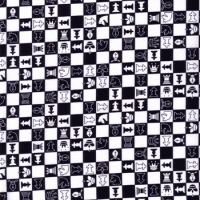
Typical Patterns Everyone Should Know. Part Five.
Before I present a new typical tactical pattern, I want to thank my readers for their comments, ideas and suggestions. Particularly I have to thank one of my readers who suggested that in the beginning of my articles I should mention a very useful feature of the chess applets where you solve the puzzles. If you expand the move list you will see my annotations to the games I present and they could help you to understand the pattern better or answer some of your questions! Thanks for this useful suggestion!
I have to admit that initially I planned only a couple of articles on typical patterns, but due to your positive response, I decided to continue. The idea for today's subject was again (just like the last week) suggested by one of the readers. He was asking to show an attacking pattern in a situation where your opponent castles Queen side (0-0-0). I am happy to oblige. This pattern can arise from a big variety of openings and usually happens right at the end of an opening and beginning of a middlegame. For this pattern you will need two Bishops (required) and a Queen (optional). The simplest example of this pattern is shown in the next game which had a very unusual end. One of the most prominent Soviet chess educators, GM Romanovsky made a horrible blunder that allowed his opponent to win the game right away, thanks to the pattern we will discuss today. Romanovsky immediately realized his mistake and resigned not waiting for his opponent's move. He stopped the clock and extended his hand congratulating his opponent. But a very experienced master Zubarev didn't realize immediately what was going on and asked "What's the matter?" Embarrassed Romanovsky had to show his opponent the obvious combination. Can you, my dear readers spot it?






